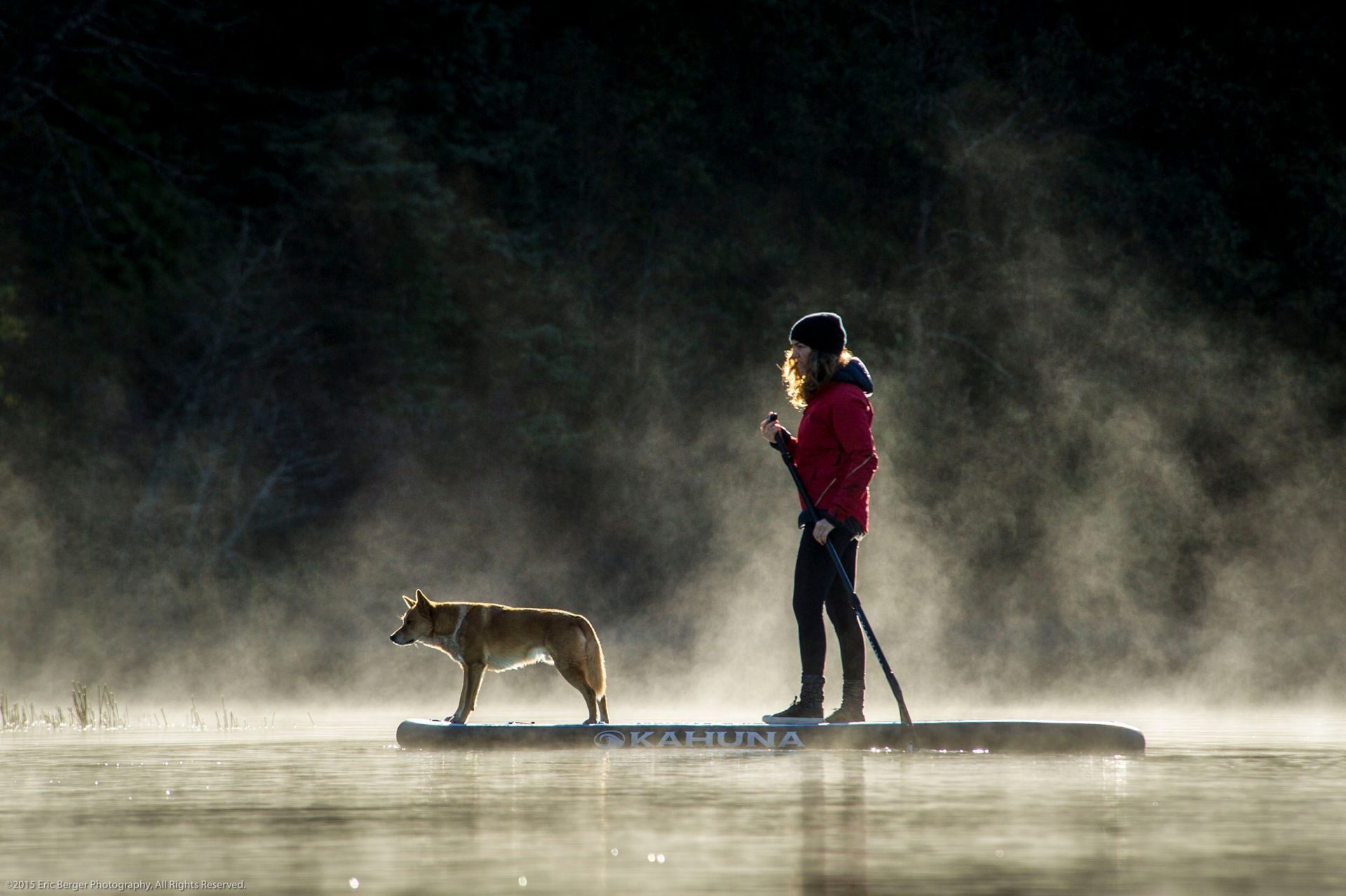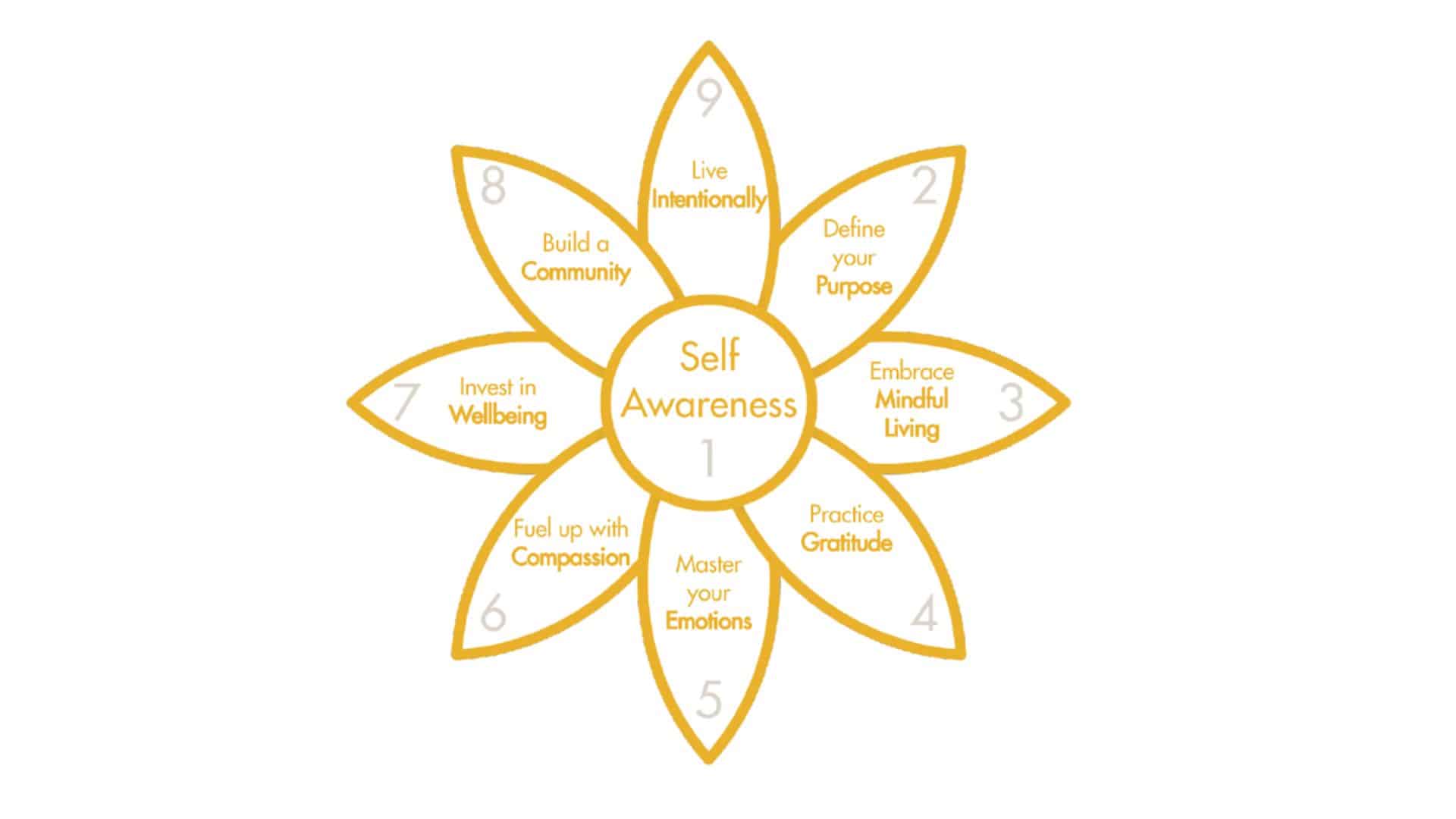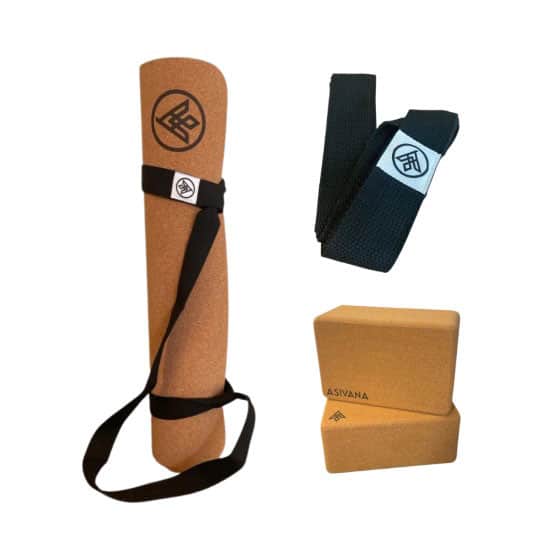SUP With Your PUP | By Marie-Piere Belisle-Kennedy
Originally published in the Summer + Fall 2019 issue.
The pure bliss of being on the water enjoying a warm sunny day with your pup is truly what bonding dreams are made of. My labrador and I spend countless hours from spring to fall just paddling around our local lakes — we look forward to this activity all winter to commune with nature and each other. We often end up meeting with friends at sunset, then hanging out on the dock as dogs frolic in the water. Our 5-year-old lab Gucci just wiggles non-stop until she sees the boards on the roof rack, making sure her bright-yellow life vest is included on the back seat.
1. Make sure the board you use is built to hold the combined weight of you and your dog(s) – otherwise you will sink. (I can testify to that, it happened to me with my first board years ago and since neither I nor my labrador felt like losing a quick 30 pounds, we upgraded to a suitable board.)
2. Shop for a large, stable board (meaning a bit wider than those race boards) with a cushioned traction pad, so that your dog won’t slip or scratch the top surface as it gets wet; these pads are commonly found on the SUP yoga-specific boards that usually can hold anywhere from 225 to 275 pounds. You can also add your own grippy surface to the nose of your board if you wish and add a mat for older dogs to rest comfortably. (The women-specific boards are fine if you are lightweight and you are bringing a yorkie or other small pup!)
3. Now let’s start from the shore of a calm lake or body of water on a nice warm day, as you should assume you will end up in the water at some point. Make sure the wind is almost non-existent for ease of maneuvering and just letting your dog adapt to the waves and natural ebb and flow of the water.
“Ideally start with a well-exercised dog, so they can hop on and chill on board. The next step is to check to see their comfort level on the water — it will either be excitement, calm or panic, so position your paddle board half on land and half in the water, positioning the fin in a safe spot,” explains Vaine. “See if you can get the dog to hop on the board with some encouragement or a few treats. If it goes easy, push away the board in the water and then just hang out with low expectations, so if you happen to fall in or lose your balance you can chuckle and keep it fun. If all is great from there, go further away from shore and see how your dog reacts and reassure them. Some dogs will instantly love it, others might panic and want to jump off. For example, my golden retriever was very nervous to go on the SUP in the beginning, but now if I don’t take him he barks non-stop.”
4. Most people use proper life jackets for themselves and bring a special floating vest with a handle on top for their dogs; that is a great idea should you have to quickly grab your dog in the water and help him back on the board, or to save their energy (even if they are natural swimmers, there are always risks involved). Make sure the doggy life jacket is properly adjusted and fitted to your dog’s breed and weight. Try it on at the house with a few positive reinforcements; let him play in the water with it on first so that your pup associates only good vibes to this accoutrement.
5. As for any activity with your dog, make sure they have access to clean water to drink. If you are on the ocean, bring a water bottle with you in a dry bag and a small collapsible bowl.
6. To avoid getting all tangled up, avoid tying a leash to your dog’s collar. Bring one with you just in case — I wear one around my waist should I need it (the quick-release kind) — but nothing that could drag along debris or pull your dog off the board. You will already have your own “surfer leash” tied to your ankle to the board, so let your dog be free as long as he or she can obey a few commands such as stay, lay down or sit. Always be mindful of your own and your dog’s safety. Bring a first-aid kit and a way to call for help for emergencies. Make sure you comply with your local marine use regulations as SUPs can be considered boats.
Photo by Eric Berger.
 Marie-Piere Belisle-Kennedy is a freelance writer and the owner of www.5StarCom.ca based in Chelsea, Qc, Canada. She spends most of her time by lakes and mountains with her husband and sidekick, their Labrador who often travels with them all over. Main interests include alpine skiing (covering the FIS World Cups), yoga, SUP, hiking, meditation and Barre. Her work has been published in Ski Canada Magazine, Ski Presse, Aspen Real Life, Compass, Globe and Mail, skionline, SkiPro, Tremblant Express & Après-Ski Country, to name a few. You can connect with her through Instagram @MP_inthemountains and Twitter @5starMP.
Marie-Piere Belisle-Kennedy is a freelance writer and the owner of www.5StarCom.ca based in Chelsea, Qc, Canada. She spends most of her time by lakes and mountains with her husband and sidekick, their Labrador who often travels with them all over. Main interests include alpine skiing (covering the FIS World Cups), yoga, SUP, hiking, meditation and Barre. Her work has been published in Ski Canada Magazine, Ski Presse, Aspen Real Life, Compass, Globe and Mail, skionline, SkiPro, Tremblant Express & Après-Ski Country, to name a few. You can connect with her through Instagram @MP_inthemountains and Twitter @5starMP. Asivana products are made from FSC-certified cork and sustainably harvested natural rubber. Their products are naturally antimicrobial [...]

Subscribe to Our Tribe
Stay up to date with Y+L News, Events and special announcements.










